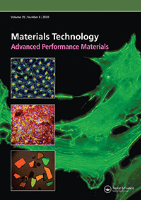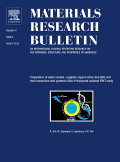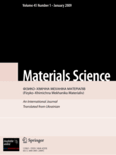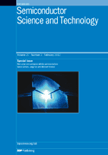
MATERIALS TECHNOLOGY
metrics 2024
Transforming Ideas into Material Solutions
Introduction
MATERIALS TECHNOLOGY is a prestigious academic journal published by Taylor & Francis Ltd, based in the United Kingdom. With an ISSN of 1066-7857 and an E-ISSN of 1753-5557, this journal has established itself as a vital resource in the fields of Condensed Matter Physics, Materials Science, Mechanical Engineering, and Mechanics of Materials, earning a Q2 ranking in multiple categories as of 2023. With a rich publication history that dates back to the early 1970s, it serves as an essential platform for disseminating innovative research and developments in materials technology. Although not available through Open Access, the journal continues to attract contributions from leading researchers, ensuring high-quality articles that advance knowledge in the materials domain. The journal's commitment to excellence is reflected in its notable Scopus rankings, placing it within the 70th to 78th percentiles across several engineering and physics categories. As a vital resource for researchers, professionals, and students alike, MATERIALS TECHNOLOGY plays a critical role in shaping the future of materials science and engineering.
Metrics 2024
 0.55
0.55 2.90
2.90 2.90
2.90 45
45Metrics History
Rank 2024
Scopus
IF (Web Of Science)
JCI (Web Of Science)
Quartile History
Similar Journals

Materials Advances
Transforming Ideas into Advanced Materials SolutionsMaterials Advances, published by the Royal Society of Chemistry, serves as a premier open-access journal dedicated to the dynamic field of materials science and chemistry. Since its inception in 2020, the journal has quickly gained recognition, achieving an impressive Q1 ranking in both the Chemistry (miscellaneous) and Materials Science (miscellaneous) categories as of 2023. With an impact factor reflective of its high academic standards, it ranks #18 out of 111 in Chemistry and #107 out of 463 in General Materials Science per Scopus metrics. The journal welcomes research articles that explore innovative materials, advanced synthesis techniques, and novel applications, thereby contributing to the ongoing dialogue in materials research. Operating under an open access model, Materials Advances ensures that groundbreaking research is freely available to a global audience, facilitating collaboration and advancements in science. With its headquarters in Cambridge, England, this journal is positioned at the forefront of technological research and discovery, making it a vital resource for researchers, professionals, and students alike.

MATERIALS RESEARCH BULLETIN
Exploring the frontiers of materials science and engineering.MATERIALS RESEARCH BULLETIN is a prestigious journal published by Pergamon-Elsevier Science Ltd, dedicated to advancing the field of materials science and engineering. Since its inception in 1966, the journal has served as a platform for high-impact research, particularly in areas such as condensed matter physics, mechanical engineering, and materials mechanics. With an impressive Q1 ranking in multiple categories, including Condensed Matter Physics and Materials Science, MATERIALS RESEARCH BULLETIN stands out as a leading resource in its domain, aiming to disseminate innovative research findings and methodologies that address fundamental and applied aspects of materials. The journal’s rigorous peer-review process ensures the publication of high-quality articles, making it an essential resource for researchers, professionals, and students alike. With its ongoing commitment to fostering scientific discourse and collaboration, MATERIALS RESEARCH BULLETIN remains at the forefront of materials research, contributing significantly to the global scientific community.

Frontiers in Materials
Driving Progress with Open Access Research.Frontiers in Materials, an esteemed journal published by FRONTIERS MEDIA SA, is a leading platform in the field of Materials Science, with a notable impact factor placing it in the Q2 category of its discipline as of 2023. Since its establishment as an Open Access journal in 2014, it has fostered considerable academic exchange, allowing researchers from around the globe to share their innovative findings and insights. Based in Lausanne, Switzerland, this journal not only emphasizes high-quality peer-reviewed articles but also prioritizes rapid dissemination of research, as evidenced by its commendable Scopus ranking of #62 out of 196 in Materials Science (miscellaneous). By consistently striving to bridge the gap between academia and practical applications, Frontiers in Materials serves as an invaluable resource for researchers, professionals, and students seeking to delve into cutting-edge advancements and transformative applications in materials science.

MATERIALS SCIENCE
Connecting Ideas, Advancing Materials Science.MATERIALS SCIENCE, a prominent journal published by SPRINGER, serves as a vital resource for researchers, professionals, and students in the fields of materials science, mechanical engineering, and condensed matter physics. With its ISSN 1068-820X and E-ISSN 1573-885X, this journal has been dedicated to sharing innovative research since its inception in 1993, and it continues to publish groundbreaking findings through 2024. Although it operates as a traditional subscription-based journal, its ranking in the Q3 quartile across multiple scientific categories, including Condensed Matter Physics, Materials Science, Mechanical Engineering, and Mechanics of Materials, signifies its relevance and impact in the academic community. Notably, its Scopus classifications reveal a competitive standing among its peers, ranking within the 25th to 33rd percentiles across various engineering and physics disciplines. The journal remains a key platform for disseminating valuable insights, fostering collaboration, and advancing the understanding of materials science.

JOURNAL OF MATERIALS SCIENCE-MATERIALS IN ELECTRONICS
Illuminating the Future of Electronics through Materials InnovationJOURNAL OF MATERIALS SCIENCE-MATERIALS IN ELECTRONICS, published by Springer, is a distinguished international journal that serves as a vital platform for the dissemination of cutting-edge research in the field of materials science, with a keen focus on electronics. Since its inception in 1990, this journal has consistently contributed to the advancement of knowledge across a range of interdisciplinary categories, including Atomic and Molecular Physics, Optical and Magnetic Materials, and Biomedical Engineering, achieving notable quartile positions in various 2023 Scopus rankings. With an impact factor that signifies its scholarly influence, this journal provides a rigorous peer-reviewed environment for researchers and practitioners to share innovative ideas, experimental findings, and theoretical developments. Although it does not currently offer open access options, the depth and breadth of topics covered—including condensed matter physics and bioengineering—make it an essential resource for those at the forefront of materials research. With a commitment to bridging the gap between theory and practical application, the JOURNAL OF MATERIALS SCIENCE-MATERIALS IN ELECTRONICS continues to pave the way for future explorations in the ever-evolving landscape of materials science.

Journal of Optoelectronic and Biomedical Materials
Illuminating the Future of Optoelectronics in MedicineJournal of Optoelectronic and Biomedical Materials (ISSN: 2066-0049) is a peer-reviewed academic journal published by the renowned VIRTUAL INSTITUTE OF PHYSICS, dedicated to advancing research in the interdisciplinary fields of optoelectronics and biomedical materials. This journal aims to provide a platform for researchers, professionals, and students to disseminate their findings on innovative materials and technologies that harness optical and electronic properties for biomedical applications. With an increasing significance in medical diagnostics, therapeutic approaches, and advanced materials science, the Journal of Optoelectronic and Biomedical Materials underscores the importance of facilitating collaboration among scientists from diverse fields. While currently operating under a traditional access model, the journal aspires to enhance global accessibility to cutting-edge research contributions that will drive the future of technology in healthcare and biotechnology. As a growing reference point in its domain, it encourages submissions that can advance these crucial scientific areas.

Accounts of Materials Research
Transforming research into impactful materials advancements.Accounts of Materials Research is a premier journal published by the American Chemical Society, focusing on the multidimensional field of materials science. With a robust impact factor and a commitment to open-access research, it serves as a vital platform for leading-edge discoveries from 2020 to 2024. The journal has rapidly ascended to the top quartile in multiple categories, including Chemical Engineering, Materials Chemistry, and Polymers and Plastics, demonstrating its significant influence within the academic community. Recognized by Scopus as a key resource—with remarkable rankings that place it in the 95th percentile of its field—Accounts of Materials Research is devoted to publishing high-quality, innovative research that addresses critical challenges in materials development and implementation. This journal is essential for researchers, professionals, and students seeking to stay informed about the latest advancements and collaborative opportunities within the interdisciplinary landscape of materials science.

JOURNAL OF PHYSICS AND CHEMISTRY OF SOLIDS
Illuminating the Science of SolidsJOURNAL OF PHYSICS AND CHEMISTRY OF SOLIDS, published by Pergamon-Elsevier Science Ltd, is a distinguished international journal that has been at the forefront of disseminating cutting-edge research in the fields of physics, chemistry, and materials science since its inception in 1956. This journal, which is recognized for its high impact in the Q2 category across multiple subjects—including Chemistry (miscellaneous), Condensed Matter Physics, and Materials Science—serves as a vital platform for researchers, professionals, and students to engage with significant advances in solid-state physics and chemistry. With Scopus rankings placing it in the top 15% of its field across various domains, the journal plays a crucial role in shaping the scientific dialogue surrounding materials properties, synthesis, and applications. Although it does not currently offer open access options, the presented research is widely recognized for its quality and relevance, ensuring that published works contribute meaningfully to ongoing scholarly discussions.

SEMICONDUCTOR SCIENCE AND TECHNOLOGY
Elevating research standards in electrical and electronic engineering.Semiconductor Science and Technology is a pivotal journal in the fields of condensed matter physics, electrical and electronic engineering, and materials science, published by IOP Publishing Ltd. With an ISSN of 0268-1242 and an E-ISSN of 1361-6641, this esteemed journal has been disseminating groundbreaking research since 1986 and is set to continue through 2024. Recognized in the latest categorizations, it holds a notable Q2 ranking in Condensed Matter Physics, Electrical and Electronic Engineering, and Materials Chemistry, alongside a Q3 ranking in Electronic, Optical, and Magnetic Materials, highlighting its significant contribution to the advancement of these disciplines. Although it does not operate under an open access model, the journal provides critical access options for researchers and professionals seeking to foster innovation and collaboration within the semiconductor community. As a vital resource, Semiconductor Science and Technology not only supports the dissemination of high-quality research but also serves as a platform for emerging trends and developments that are shaping the future of semiconductor technology.

Materials Today Nano
Transforming Materials Science Through Cutting-Edge Nano ResearchMaterials Today Nano, published by Elsevier, is a premier academic journal dedicated to the forefront of nano-materials research, encompassing innovations and advancements in biomaterials, condensed matter physics, electronic, optical, and magnetic materials, as well as materials chemistry. With an impressive Q1 ranking across multiple categories, including biomaterials and materials chemistry, this journal serves as a essential platform for researchers, professionals, and students aiming to contribute to and stay informed on cutting-edge developments that push the boundaries of materials science. Its open access model allows for wider dissemination of high-impact findings, ensuring that the research reaches a global audience. Operating from the United Kingdom, Materials Today Nano plays a vital role in fostering interdisciplinary collaboration and advancing scientific understanding in this rapidly evolving field.